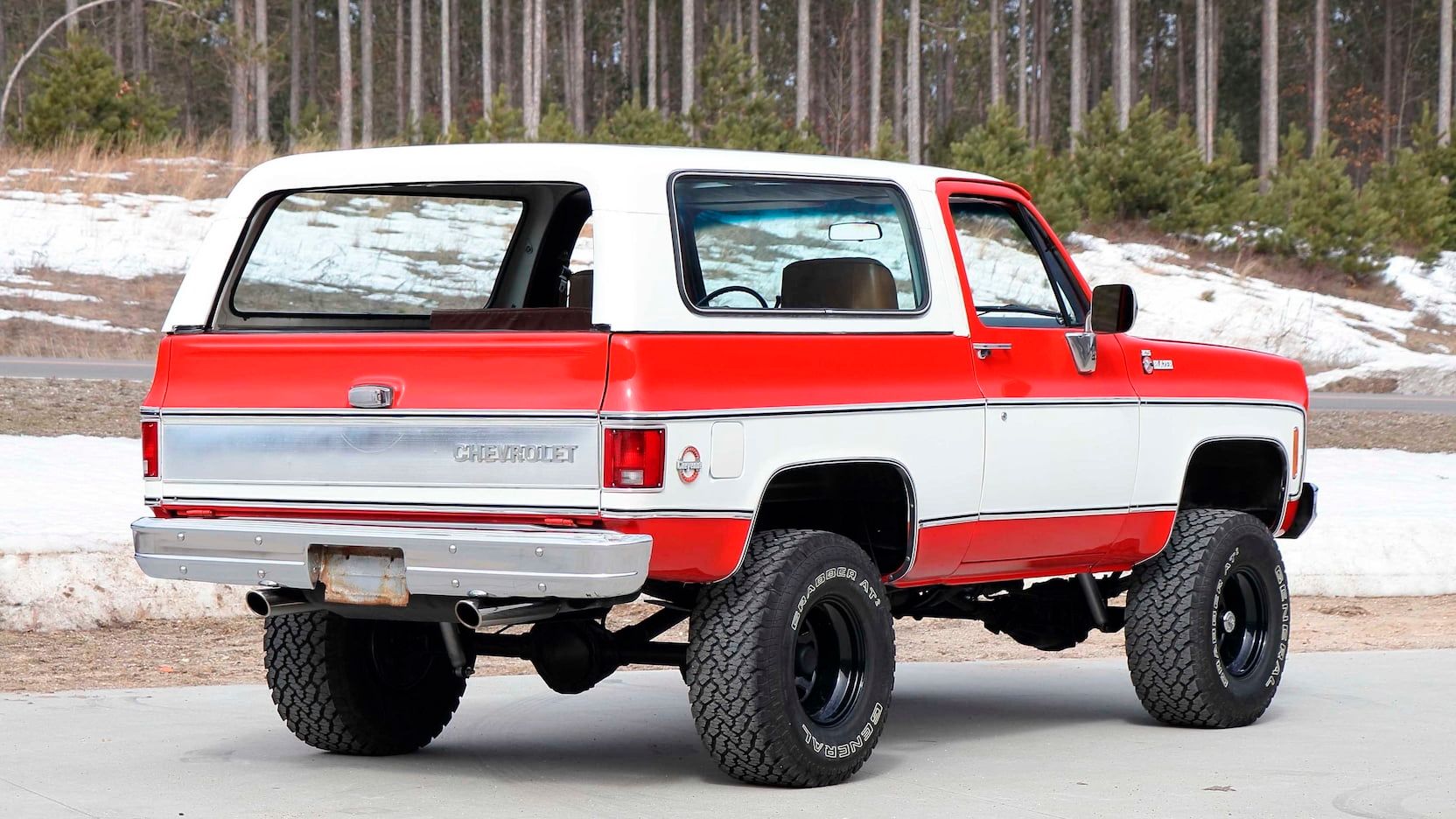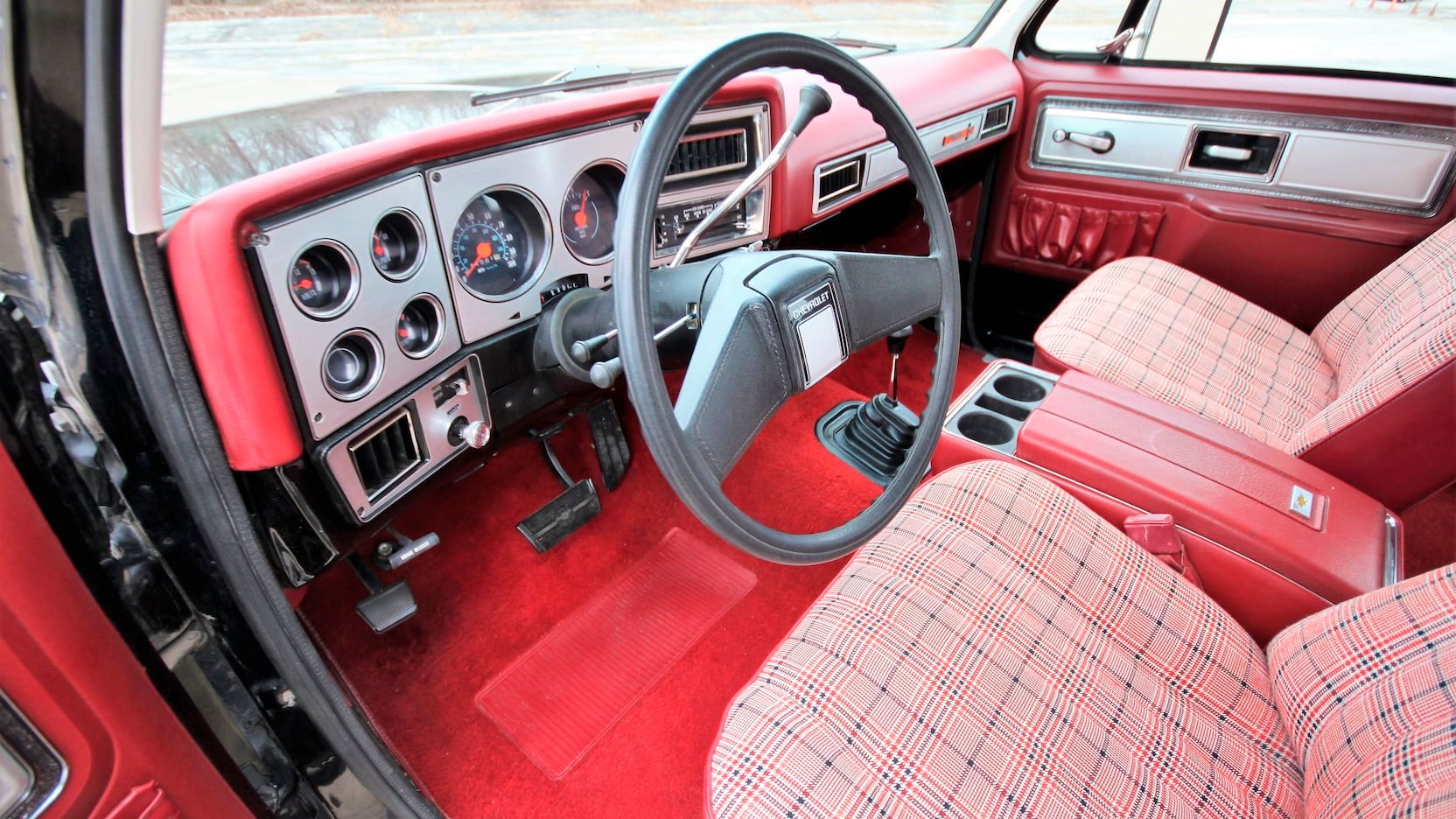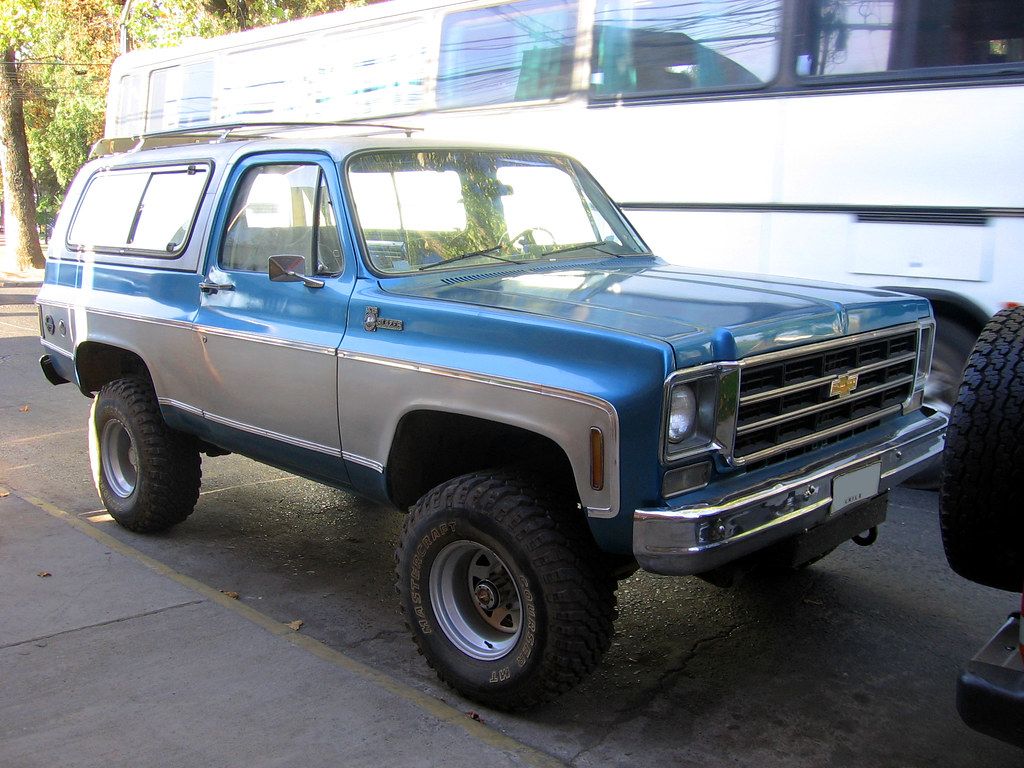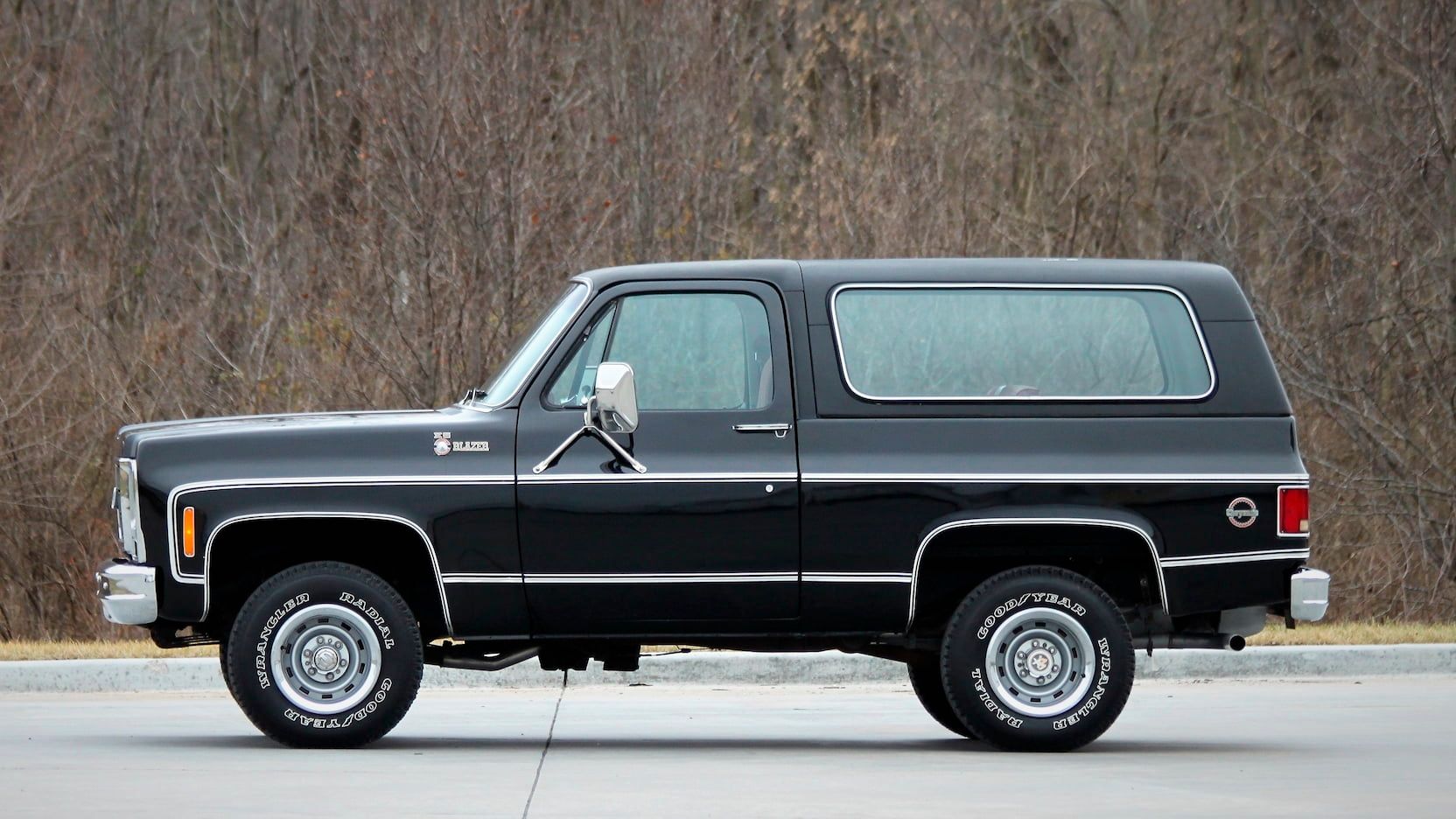The history of Chevrolet's luxury SUVs is rooted in its classic K5 Blazer models, which began in 1969. After watching the success of Ford's Bronco and Jeep's CJ, General Motors, makers of Chevrolet, decided it was time to explore the world of truck-based SUVs.
And so, the first generation of Chevrolet K5 Blazer debuted with bigger cargo space and longer wheelbase. GM's strategy to incorporate its former K10 pickup into the new car worked as the classic K5 Blazers edged its rivals in sales.
However, the highest-selling Chevrolet K5 Blazer did not arrive until 1979. The 1979 model is one of the reasons why second-generation K5 Blazers lasted for 19 years.
Here are more reasons why we love the 1979 Chevrolet K5 Blazer
The Most Successful Second Gen Chevy K5 Blazer
Second-generation K5 Blazers produced more than 90,000 units, and the introduction of the 1979 model influenced that. After a brief first-generation run of the classic K5 Blazers, the company marked the beginning of its new generation truck-based SUVs with box-like vehicles.
The K5 Blazers initially used the complete form of the first model and the upgraded engine and structure of its next-generation pickup. In 1976, the detachable roof of the K5 was replaced with a fiberglass cover above the back seats.
This design change incorporated in the subsequent K5 Blazer, including the 1979 model, resulted in positive reviews. Even rival SUVs like Dodge and Jeep had to produce new versions (Ramcharger and Jeep Cherokee) with similar designs to remain competitive.
Thanks to the upgrades, the 1979 model was also thriving, which included a better fuel door. A sleeker hood and combined parking and headlights were utilized in the makeover. Customized vinyl decorations in red, beige, or blue and various trim delights were available on the deluxe Cheyenne versions. In addition, they had a new steering wheel plus improved technology.
Designed Like A Typical Classic Chevrolet K5 Blazer
The drivetrain and design of the 1979 Chevy Blazer are very similar to other K5 Blazers. The major exception is the combination of back hatch glass and a tailgate that was introduced in 1976.
The new design lets drivers efficiently use a manual crank placed on the tailgate to remove the glass panel locked within the tailgate.
Manufacturers did a great job of making the 1979 Chevy Blazer sleek by including an electric engine feature. It was easy to activate the electric motor with two switches: one mounted on the dashboard and key-operated.
Nevertheless, there were claims and debates about such developments. For example, the Blazer's massive glass panel's alleged mass was viewed as a significant disadvantage. Experts thought that the mechanical crank gears would be rapidly degraded.
In addition, the K5 electric engine was susceptible to recurring overheating and breakdown. The protection switch was another component of the K5 Blazer's tailgate that was criticized.
Drivers seemed to have issues with lifting the rear window because the tailgate was linked to the engine. In any event, all of the listed concerns served as catalysts for the 1979 Blazer's further development.
The 1979 Chevrolet K5 Blazer Outsold Rival SUVs
All history of truck-based SUVs often contains the rivalry between Ford's Bronco and Chevrolet's K5 Blazer. But, this was not how it started between the two classics as both were initially designed to outdo Jeep's CJ.
However, the two classic cars discovered their toughest competition in each other. Most notably, Chevy had an automatic gear option from the start. Many people indeed appreciate the comfort of a manual gearbox, yet automatics at the time offered a more extensive torque capability.
For this reason, the K5 Blazer was readily accepted by drivers in those days. Even though Ford's Bronco, International Harvester's Scout, and Jeep's CJ all made their way into the market before Chevrolet, the latter still dominated in sales.
Annual sales had multiplied ten times as second-generation Blazers were being introduced. Subsequent K5 Blazers, including the 1979 model, repeated the same feat year after year.
An Always-evolving Trailblazer
The 1979 K5 Blazers developed into a distinct type of SUV in 1995, thanks to multiple improvements. The compact SUV was called Tahoe and had rounder body features and extra internal storage compartments.
In 2001, Chevrolet announced a new Blazer Xtream to strengthen poor sales of third-generation Blazers. The attempt was futile as the Blazer Xtream with a shorter two-wheel-drive feature failed to attract customers. And so, production for Chevrolet Blazers stopped in 2005 to stage a stunning comeback fourteen years later.
The 2019 Chevrolet Blazer did not disappoint with exterior features that include curved sheet metal, a prominent grille, and a powerful rear end. Even though the modern design is void of the box-like structure that made the 1979 model famous, the new Chevy Blazer made the same impression as its predecessor.
Like the 1979 K5 Blazer, the new Chevrolet car is built to hold five passengers as it still retains its roomy interior. The 2019 model sold over 58,000 units in the US in the same year it was opened for sales.
However, Chevy Blazers are constantly evolving, and the 2021 model with a front face looking like a Camaro proves that. Interestingly, the 2022 Chevrolet Blazer will be available to order in 2021.

.jpg)



